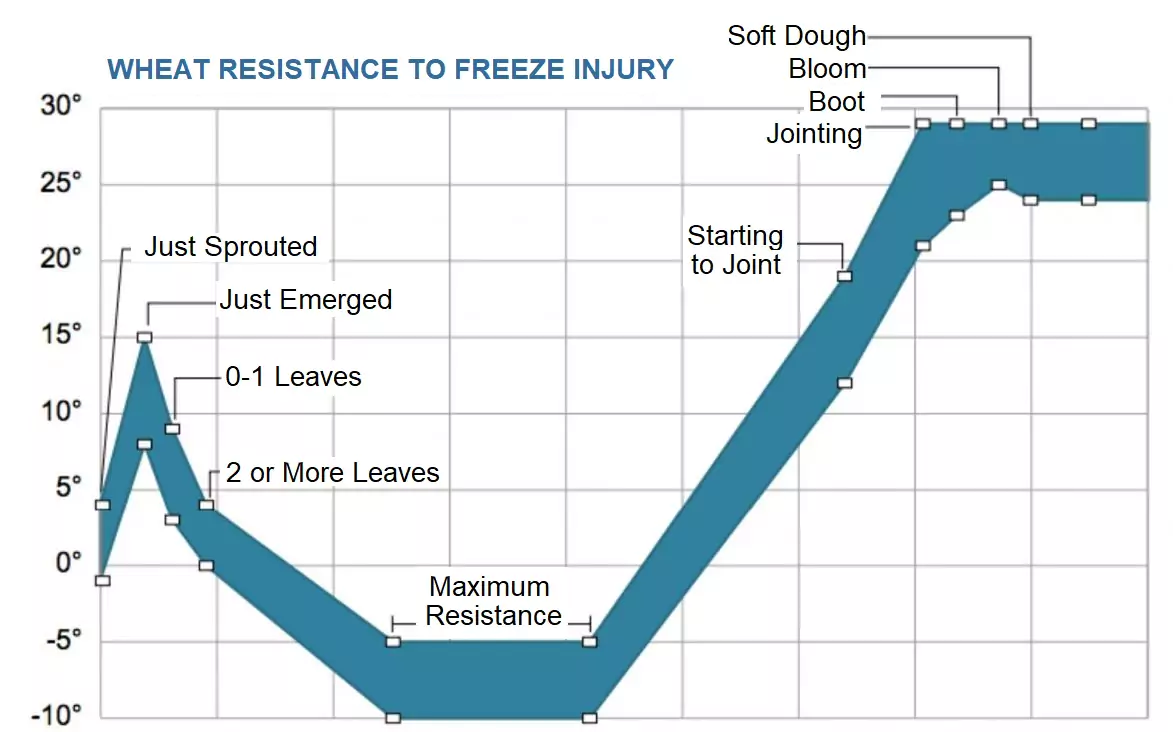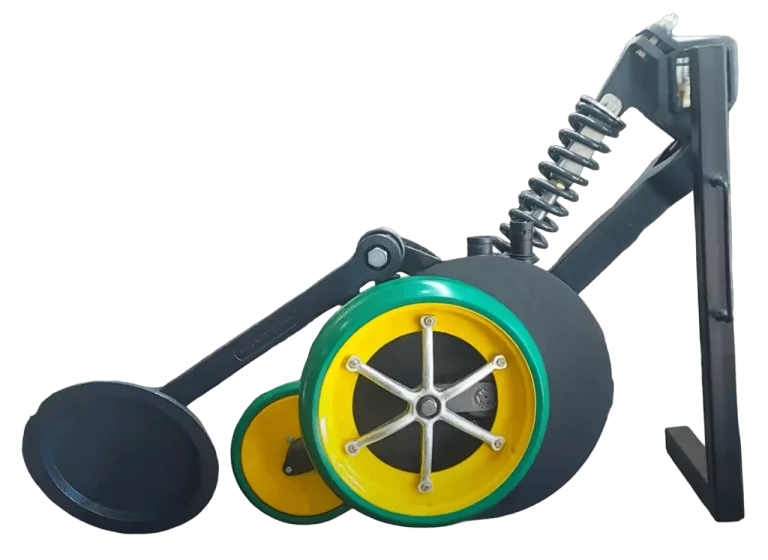Damage to wheat caused by frost
Although wheat’s growth stage or maturity is probably the most important, other stages can also be affected by the impact of frost on winter wheat.
The duration and severity of the frost event, the plant’s moisture content, elevation and topography, and a reduced upper vegetative layer can increase the susceptibility of winter wheat to low temperatures.
Additionally, some varieties may also be more susceptible to frost than others.
Damage During Crop Development
Winter wheat increasingly loses resistance to low temperatures after it begins rapid growth in spring and progresses towards maturity. Wheat is most sensitive to low temperatures during the reproductive period, which starts with pollination in the late boot stage. The temperatures required to cause damage throughout the life cycle of winter wheat are shown in the following figure.
Two-hour temperature exposures cause freeze injuries to winter wheat at various growth stages.
Both the temperature reached and the duration of the low temperature can be factored into the extent of damage inflicted. Longer durations of freezing temperatures will cause more damage than a brief exposure.

Symptoms
Local weather stations may not accurately represent the temperature levels for all surrounding areas. Suppose a producer suspects that damaging temperatures may have occurred. In that case, it is best to individually inspect fields, starting with low-lying areas, as cold air tends to flow to these areas.
Apart from a dark green colour or a “water-soaked” appearance of the foliage, symptoms may not appear for a week or more, depending on the growing conditions following the event. Warmer temperatures stimulate the decomposition of injured plant tissue and accelerate symptom development. Easily observed symptoms such as dead leaf tissue and white awns do not usually cause significant yield reductions.
However, they may be indicative of a more severe problem. A summary of the temperatures that cause injury, along with expected symptoms and the effect on grain yield, is shown in Table 1.
| Growth Stage | Approximate Injurious Temperature (2 hours) | Primary Symptoms | Yield effect |
| Tillering | 12°F | Leaf chlorosis; burning of leaf tips; silage odor; blue cast to fields | Slight to moderate |
| Jointing | 24°F | Death of growing point; leaf yellowing or burning; lesions, splitting, or bending of lower stem; odor | Moderate to severe |
| Boot | 28°F | Floret sterility; head trapped in boot; damage to lower stem; leaf discoloration; odor | Moderate to severe |
| Heading | 30°F | Floret sterility; white awns or white heads; damage to lower stem; leaf discoloration | Severe |
| Flowering | 30°F | Floret sterility; white awns or white heads; damage to lower stem; leaf discoloration | Severe |
| Milk | 28°F | White awns or white heads; damage to lower stem; leaf discoloration; shrunken, roughened, or discolored kernels | Moderate to severe |
| Dough | 28°F | Shriveled, discolored kernels, poor germination | Slight to moderate |
Early damage assessment can provide more management options if the damage appears severe, such as harvesting hay or replanting another crop, including corn, soybeans, or sorghum.
Producers need to evaluate an alternative crop’s production costs and expected yields before destroying damaged winter wheat and replanting.
Observations
- In irrigated conditions, the cold symptomatology in wheat is minimal, making choosing cold-resistant varieties less crucial.
- In more restrictive environments, selecting appropriate varieties becomes more critical.
- There is an interaction between the genetics of the varieties and the availability of nitrogen, which can mitigate the effects of cold.
- Depending on the cultivation environment, the choice of variety and nitrogen management can be vital in alleviating the effects of cold.
- Short-cycle varieties generally perform poorly in cold conditions.
Conclusions
In conclusion, the text highlights the importance of selecting varieties and agronomic management based on environmental conditions and specific challenges, such as cold and frost, to optimize the yield and resistance of wheat.
Consulted Sources
Low Temperature Effects on Winter Wheat: Jonathan Kleinjan, SDSU Extension Agronomist
Heladas y Trigo Reconocimieto y consecuencias. Información preparada por el Ing. Agr. Carlos Coma – RIAP/RIAN Oficina Bahía Blanca. EEA. INTA Bordenave.




 WhatsApp us
WhatsApp us